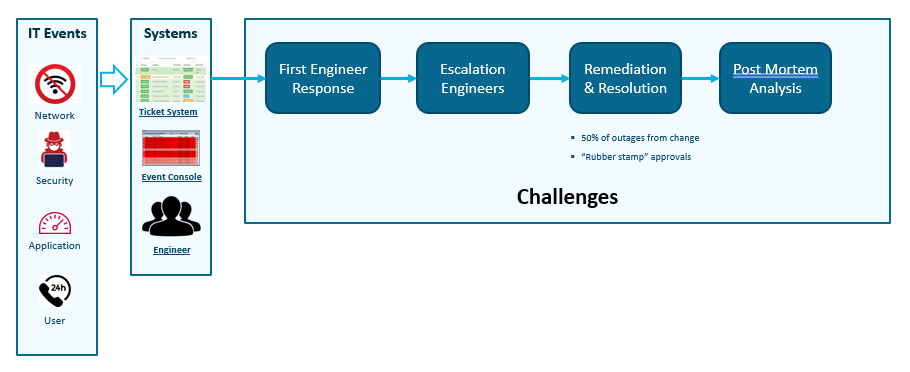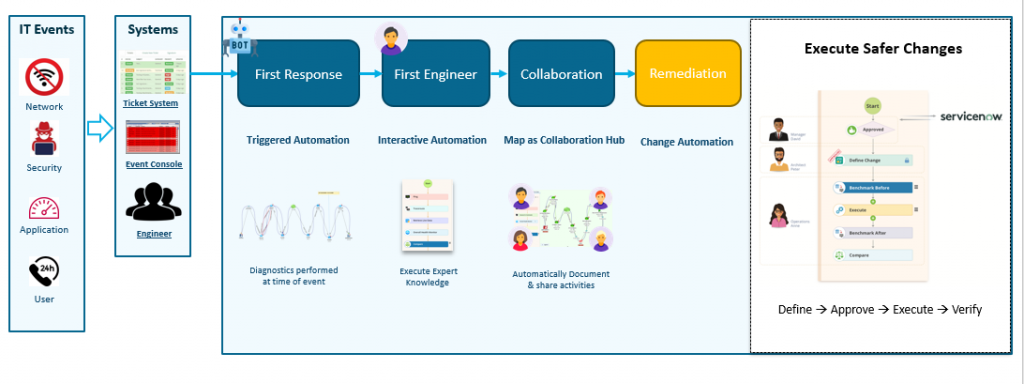 by Sep 10, 2019
by Sep 10, 2019
Ed. note: The following transcript has been drawn from the on-demand recording — no registration needed or form to fill out — of NetBrain’s Just in Time Automation for IT Operations webinar. Jason Baudreau, NetBrain VP of Marketing, is your host. The companion blog Troubleshooting Is a Team Sport: Automation That Promotes Collaboration discusses how network change management collaboration helps reduce mean time to identify, or mean time to innocence (MTTI).
Let’s talk about that repair phase of a response workflow. The repair phase might not be the most time-consuming, but it can be the most risky.
In fact, about 50% of outages can be traced back to a network change. That’s the last thing we want to do when we’re troubleshooting — make matters worse. To avoid that, a lot of organizations have procedures and approvals to ensure changes are made carefully. When these approvals become just a rubber stamp process, that’s when teams can run into challenges.

Runbook automation can help here too. A runbook is used to define the network change and communicate that change plan across the team with an approver. The approval process can follow your traditional change management processes. For example, a change can be requested and approved through ServiceNow, and that approval will unlock a change runbook in NetBrain so that it’s allowed to be executed.
The last phase of the change management process is to verify the impact of that change. This is typically done by verifying, say, a critical application or multiple applications inside NetBrain to verify that they’re not impacted by that change. And that can also be done through runbook automation.


